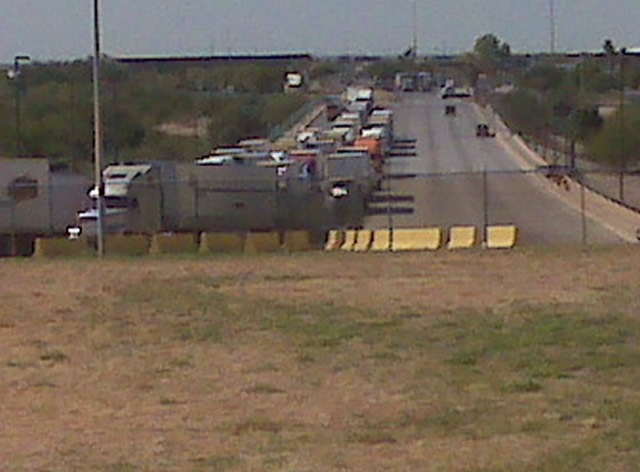A View from the Border
James Carafano /
How goes the battle for the border?
Heritage Foundation Latin American specialist Ray Walser and I spent some time on the border at Laredo, Texas, with Customs and Border Protection (CBP) and the U.S. Border Patrol. Laredo is America’s largest inland port of entry. Last year, 1.64 million trucks passed through the port, representing about $70 billion in commerce. Also in transit were hidden stacks of cash, guns, cocaine, heroin, and marijuana, as well as people illegally trying to enter the United States. The job of CBP and the Border Patrol, both parts of the Department of Homeland Security, is keep as much of the “bad stuff” out as possible and let the “’good stuff” in as fast as they can.
It’s a 24-7-365 job. No day is dull. During our time in Laredo, CBP seized $300,415 in cash crammed in wads behind a car’s dashboard.
In addition to worrying about what is crossing the border, Homeland Security worries about what’s happening on the other side of the border in Nuevo Laredo as a vicious turf war between rival transnational cartels rages on. Violence in the city rivals the worst days in Baghdad in 2005. Recently, the beheaded body of Maria Elizabeth Macias Castro, a blogger who had been cataloguing cartel activities “had been dumped near a computer keyboard with a note signed by a major drug cartel mocking her pseudonym — ‘Girl From Laredo.’”
I visited the Laredo sector a few years ago. A lot has changed.
On the Mexican side, it has gotten worse—a lot worse. The police, thoroughly penetrated by the cartels, has been abolished. Mexico’s Army now patrols the streets.
On the US side, it is all hustle and bustle with few signs of violence spilling over the border.
In Laredo, the men and women of CBP and the Border Patrol take their jobs very seriously—and it shows. The facilities, capabilities, and activities of CBP and the Border Patrol have changed as well. The investments made in the Department of Homeland Security over the last decade are clearly paying off. There is more technology, more agents, more innovation, and more cooperation with other federal, state, and local law enforcement, as well as strong working relationship with the Mexican military which overwatches efforts on the other side of the border.
There is particularly, positive news on efforts to facilitate trade. Shortly before our visit, there was a ceremony marking the first Mexican long-haul carrier certified to carry shipments into the U.S. This breakthrough is going to significantly cut down the cost of doing cross-border business and benefit both countries. (Article continued below photo)
On the security side, illegal traffic of all sorts is finding the Laredo sector a tougher route to follow.
It is also clear that even the best efforts at the border can only do so much. The U.S. has broadened the battle to control the border beyond the borders. Here the Administration can do much better. On the U.S. side, it is troubling to hear ever increasing reports that Homeland Security is backing away from interior enforcement. On the Mexican side, U.S. efforts to work with Mexico to improve security, open up the economy, and restore civil society continue to lack urgency, focus, and teamwork—and some times common sense. The recent “Fast and Furious” debacle is the poster child for how not to operate across borders.
Also troubling are the prospects of across the board budget cuts that might cripple the border security efforts that have been built-up over the last decade.


